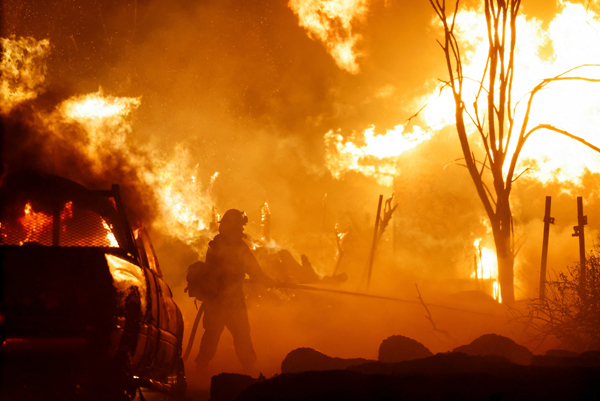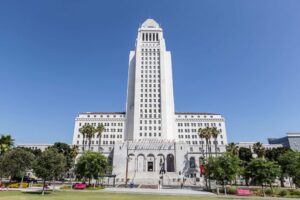Experts: Wildfire Prevention More Critical Than Green Policies for Environmental Protection
Recent devastating wildfires in California are raising serious questions about the effectiveness of the state’s climate change policies, revealing a critical disconnect between ambitious environmental goals and practical forest management priorities.
While Governor Gavin Newsom and Democratic legislators continue to push for strengthened climate change initiatives, recent research suggests these efforts are being dramatically undermined by the state’s recurring wildfire crisis. According to researchers at the University of Chicago, the carbon dioxide emissions from wildfires in 2020 alone offset decades of the state’s greenhouse gas reduction achievements.
More concerning is that the 2020 wildfires were relatively less severe compared to recent major fires in the Los Angeles area. With California experiencing wildfires almost annually, the state’s climate goals are being continuously nullified by these devastating blazes.
“The focus on green initiatives, while laudable, is missing the forest for the trees – quite literally,” says Dr. Sarah Martinez, an environmental policy expert at Stanford University. “The state’s priorities need serious recalibration. Preventing one major wildfire could do more for carbon reduction than years of green initiatives.”
Critics argue that the state government’s attention and resources would be better directed toward wildfire prevention rather than its current focus on:
- A $54 billion climate action budget
- A high-speed rail project exceeding $100 billion
- Bans on internal combustion engine vehicles
The irony is stark: while California’s total greenhouse gas emissions represent only a tiny fraction of global emissions, even these modest reductions are being negated by massive wildfire-related carbon releases. Environmental scientists emphasize that robust forest management and fire prevention strategies could yield more immediate and substantial environmental benefits than many of the state’s current green initiatives.
“We’re spending billions on electric vehicle infrastructure and high-speed rail while our forests are literal tinderboxes,” notes William Chen, a fire ecology researcher. “A single severe fire season can release more carbon dioxide than all the reductions achieved through years of green policies. It’s time to prioritize practical forest management over politically attractive but less effective climate initiatives.”
The situation highlights a crucial reality: the most effective environmental protection might not come from headline-grabbing green policies, but from practical, on-the-ground wildfire prevention efforts. As California faces another potentially devastating fire season, many experts argue that the state’s environmental strategy requires a fundamental shift toward prioritizing forest management and fire prevention over broader climate initiatives.
This reality check comes as a particular challenge to California’s Democratic leadership, which has long positioned the state as a global leader in climate policy. However, the mounting evidence suggests that without addressing the immediate threat of wildfires, even the most ambitious climate goals may remain perpetually out of reach.












































 10년 전 DUI 기록 문제돼 갑자기 비자취소 통보받아
10년 전 DUI 기록 문제돼 갑자기 비자취소 통보받아 







































